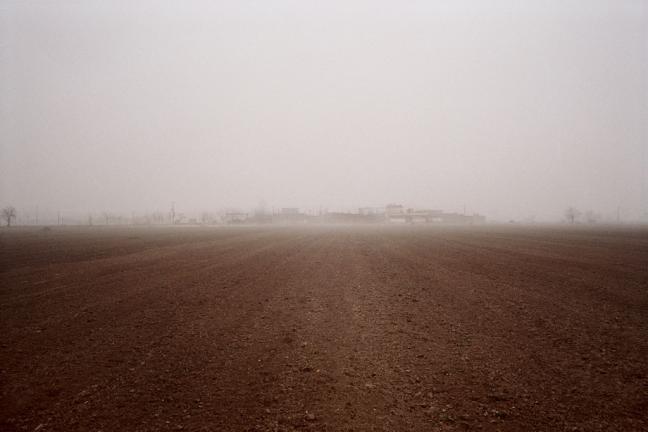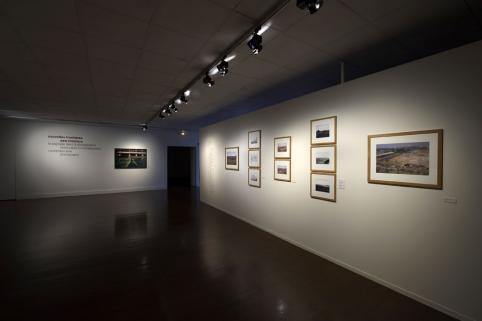In the last few decades of the twentieth century, photographers took the landscape down from the pedestal on which painting had placed it. It became a question of conquered, ruined, globalised territories as opposed to the sublime, the romantic and universal beauty. The impact of humanity and industrialisation could no longer be ignored.
Taking work from Bertrand Meunier, Mario Giacomelli, Claire Chevrier and Lewis Baltz from the permanent collection,
the musée Nicéphore Niépce has put together an exhibition-dossier on the theme of landscape on contemporary photography.
As far as they eye can see, building is going on. The bungalow is a land-eating cell, an insatiable beast that swallows up everything in its path but, don’t be fooled, with the poor on the left and the rich on the right. Factories are no longer content to remain in specific industrial zones.
There is no country left; there are no more « landscapes ».
We now have to choose between the megacity and the city. The rest has been conceded. Nature has become an amusement park, a sports club, a tourist reserve, a huge vegetable garden, an alibi.
In the seventies, American artists such as Lewis Baltz showed landscapes wrecked by civilisation, hybrid locations, no man’s lands on the edges of big cities. He made his point coldly, without trimmings. Contemporary landscapes are an objective representation of reality, a reality that is becoming more and more uniform regardless of where we are in the world. A reality where the only beauty can come from a shape or a colour, and no longer the subject itself.
Like Joubert, the photographer would like to see beauty. « Those who don’t see beauty are bad painters, bad friends, bad lovers. Those who don’t see beauty have not managed to raise their minds to nature or their heart to goodness ». Time has passed, the chemistry that invented the photographer has spread devastation. The curiosity that before justified his excursions and expeditions has debased places of interest, worse it has made them banal. Cities and their architecture that were so in line with his lens
are disappearing from the frame by changing into megacities - these worrying growths. And photographers who supported the conversion of nature into land parcels resign themselves to recording and moralising, they have little choice.
The photographer is suspicious and circumspect when face with modernity. He no longer moves through the landscape as the pioneers did, the painters, sketchers, observers sent to frame fragments. In Yosemite Valley, the photographer faithfully accompanied the railroad company’s surveyor. With his camera on his back, he depicted the skinning of the last vestiges of the virgin world. He feigned innocence and righteousness as he participated in the preparatory inventory of the big slice up.
Later, John Ford and Ansel Adams, their tails between their legs, with their grandiose panoramic views and astonishing prints, undertook the suspension of the moment where the feeling of the immensity was in harmony with the elevation of the soul. But it was too late.
The sublime was gone and in the deserts where the fate of the landscape was played out, in Arizona, in the Sahara, in the Asian steppes, in these territories emptied of their natives, a new episode for the battle of the world-space began: the atomic race, the beginning and the end of landscape.
François Cheval, curator of the musée Nicéphore Niépce




